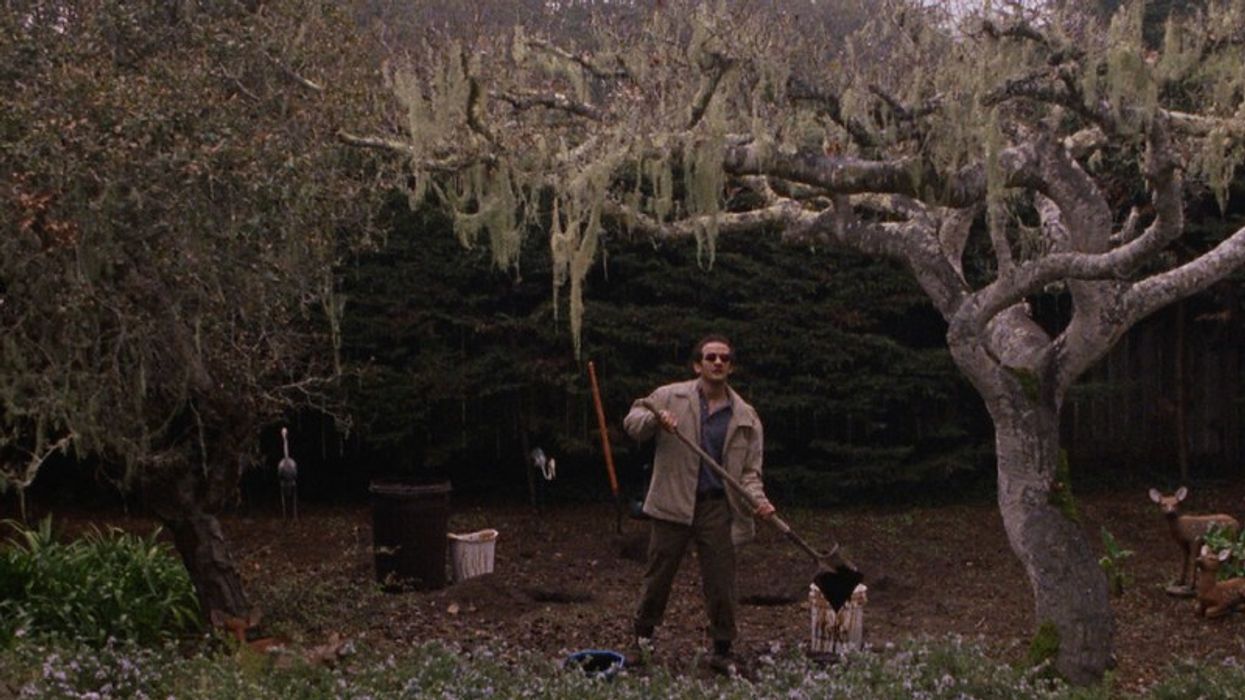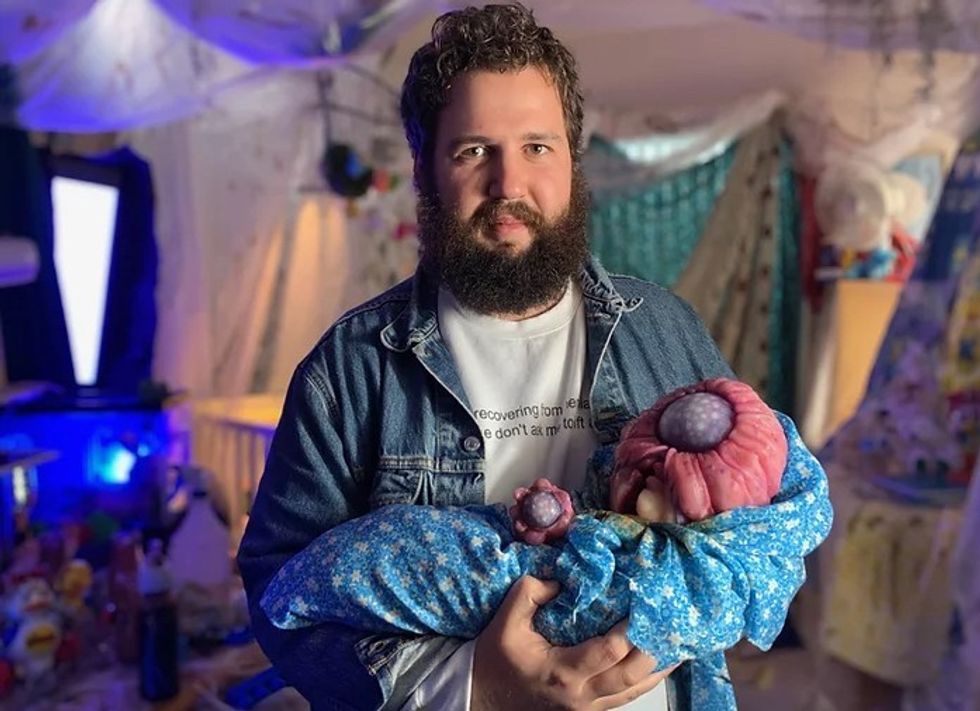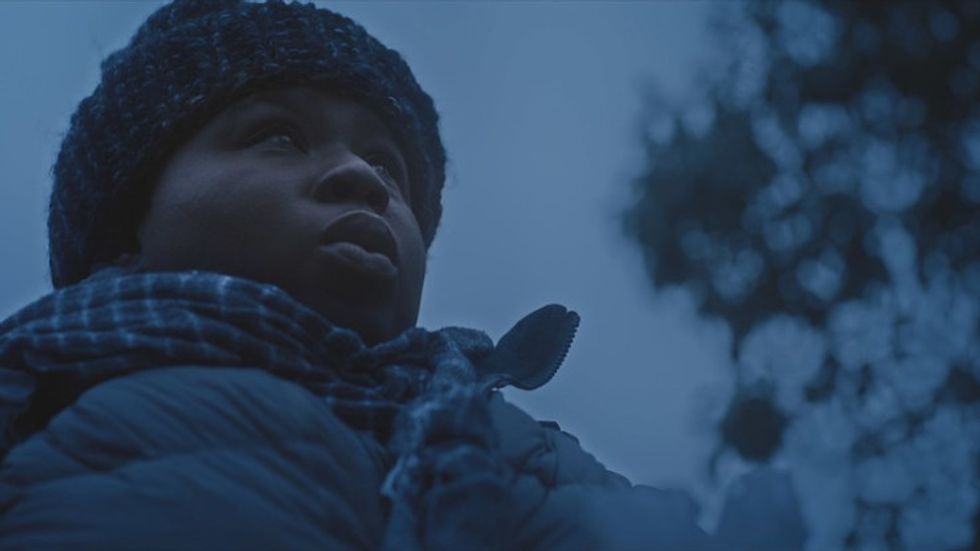Four Completely Different (and Amazing) Sundance Shorts, and How They Were Made
From filming waist-deep in snow, shooting on 16mm film, or making adorably gross puppets, short films take a lot of work.

The Sundance Film Festival received a whopping 10,374 short film submissions this past year.
Holy short!
According to the Sundance Institute, short film programmers received a record number of short film submissions for Sundance 2022, with about 500 more than last year. From that massive pile, only 59 were selected to play at the festival. That’s stiff competition.
Making a short film, especially in the middle of the pandemic, is hard. But it's all worth it when you get to screen the finished film!
No Film School asked four filmmakers with shorts at Sundance 2022 to share the process of making their films. Here’s what they said.

While Mortals Sleep
Synopsis from Sundance Institute: When a cold case novelist’s career implodes, she seeks refuge at her friend's remote vacation home. Upon arrival, she encounters a strange couple who claim to be the caretakers. As tensions build, a dark secret begins to emerge.
From director Alex Fofonoff:
“Our film is about the unnerving feeling of losing your grip on reality, and I worked with Stoopid Buddy Stoodios to make a beautiful and totally disgusting puppet for the film as a character that would really personify that feeling. It was fascinating to watch our puppeteer on set, Ron Binion, bring this creature to life. The whole team did such a great job supporting the puppet and puppeteer, that every time we did a take with the creature, it felt like the whole cast and crew was transported to another dimension where this thing was a real living, breathing cosmic terror. And it was just as important to me that the actors playing the "baby's" parents treated it as their precious little baby above all else. They are parents first, and cosmic cultists second.”
Long Line of Ladies
Synopsis from Sundance Institute: A girl and her community prepare for her Ihuk, the once dormant coming-of-age ceremony of the Karuk tribe of northern California.
From co-director Rayka Zehtabchi:
“It was crucial that the community and the Allen family were active partners in the storytelling process, and that meant going on a long journey with them of listening, learning, and building trust. While the film is centered on Ahty and her family as they prepare for her ceremony, over time it became less about the ceremony itself and more about the strong, tight-knit community that rallies around Ahty and uplifts her as she transitions into womanhood. We shot on 16mm film and that also required us to be really mindful about what we were capturing.”
From co-director Shaandiin Tome:
“It was an unconventional way of finding ways to communicate and build trust, mostly because of the pandemic. We would have zoom calls, regular calls, Rayka went out for a scout, and we never officially met in person until we had started to shoot. It was quick getting to know each other, and the family made us feel at home in every way. We couldn’t have done it without their love and care, and also their trust in us.”

You Go Girl!
Synopsis from Sundance Institute: Audrey, a New York City comedian who can make a joke of any situation, faces a staggering challenge in the beautiful mountains of Oregon. Can this city woman overcome her fears and rise?
From director Shariffa Ali:
“The process of making You Go Girl! was a spirited uphill journey. Just like the character of Audrey–played immaculately by Tiffany Mann—we had a mountain to climb. Our crew was a blend-it family made of theatre artists and independent filmmakers. Our biggest and most expensive obstacle was keeping everyone safe and healthy during the height of a pandemic.
Some crucial parts of the story were shot on the steep icy mountainside of Mount Ashland, with snow that was waist-deep in some areas. It was a feat to carry all the gear to our location in such extreme conditions.
Even with the proverbial and literal heavy-lift there was a palpable levity and joy in the air on set and all around the making of this film… Everyone knew it was going to be special. I guess we connected deeply with the material and Tiffany’s incredible performance. We held each other up during throughout every aspect of this process.
At the very end of the shoot, the final shot was just in time to catch the setting Sun as it bathed us all in its pink and orange haze. I will remember that for the rest of my life.”
Huella
Synopsis from Sundance Institute: When the death of her grandmother unleashes a generational curse, a disenchanted flamenco dancer resigned to a desk job is forced to experience the five stages of grief through a visit from her female ancestors.
From director Gabriela Ortega:
“The process was fast because of the fellowship it was made under. We only had three weeks for pre-production and one month of post-production so it was really important to bring on a team of collaborators that understood the movie and felt passionate about it. I am not just proud of the movie itself but of how we made it. Even with zoom limitations and covid regulations, everyone brought so much of themselves to the project which was incredibly inspiring as a director. To me, the most beautiful work comes out of assembling a team that you trust, creating a shared vision and then allowing them to shine and do what they are great at. Making Huella was fast and intense but the team behind it made it feel like a walk in the park even when we faced challenges.”
Keep an eye out for more work from these talented filmmakers!












